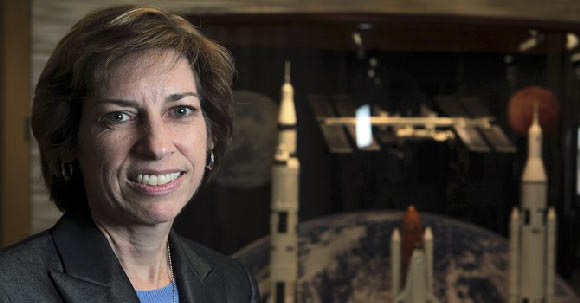Ellen Ochoa invented “Optical Analysis Systems”
Dr. Ellen Ochoa is the world’s first Hispanic female astronaut. She was born on May 10, 1958, in Los Angeles, California. She attended Grossmont High School and graduated in 1975, with a strong partiality towards science. Her parents got divorced around this time and she lived with her mother and four siblings. She then enrolled at San Diego State University where she received her Bachelor’s in Physics in 1980, having been named the valedictorian of the graduating class. After that she enrolled at Stanford University where she received a Master’s degree in electrical engineering in 1981, followed by a Ph.D. in the same field in 1985. During her doctoral thesis, she collaborated with Joseph W. Goodman and Lambertus Hesselink.
During her pre doctoral work at Stanford, Ochoa developed an optical system to detect imperfections in repeating patterns, which she patented in 1987. This invention basically served the purpose of a quality control device during the manufacturing of intricate machinery. In 1985, she started working at Sandia National Laboratories in California where she was part of the technical team in the Imaging Technology Division. Here she invented two new procedures; one for an optical system and another for an optical pattern recognition system. For this she received two more patents, bringing her total number of patents held to three.
During her time at Stanford, some friends suggested that she should consider training as an astronaut so along with some of her friends, she also applied to NASA. She got accepted and began her career at NASA at the “Intelligent Systems Technology Branch” located in California. Within just 6 months, she became the head of this branch. In January 1990, she was chosen for the astronaut training program and completed her training in July 1991.
She served as the Crew Representative for flight software and also worked in computer hardware and robotics before her first venture into space that took place aboard the shuttle “Discovery” on April 8, 1993. She was the only female member of the crew that made 148 orbits of the earth in order to measure solar output. Her time in space includes the post of mission specialist on board flight STS-56 in April 1993, Payload Commander on flight STS-66 in 1994, and mission specialist and flight engineer on flights STS-96 in 1999 and STS-110 in 2002. In all, she has been aboard four flights, spending more than a thousand hours in space.
Dr. Ochoa has received many notable awards and honors including several from the Hispanic community. These include the NASA Group Achievement Award for Photonics Technology in 1991, the NASA Space Flight Medal in 1993, the Congressional Hispanic Caucus Medallion of Excellence Role Model Award in 1993 and the Women in Science and Engineering Achievement Award in 1994. She is also a member of the Optical Society of America and the American Institute of Aeronautics and Astronautics. She is married to a computer engineer named Coe Fulmer Miles and lives in Texas with her husband. She is fond of sports, music and flying. She has a private pilot’s license and is an accomplished flautist. She won the Student Soloist Award in the Stanford Symphony Orchestra in 1983. Ellen Ochoa has now retired from her engineering career.
